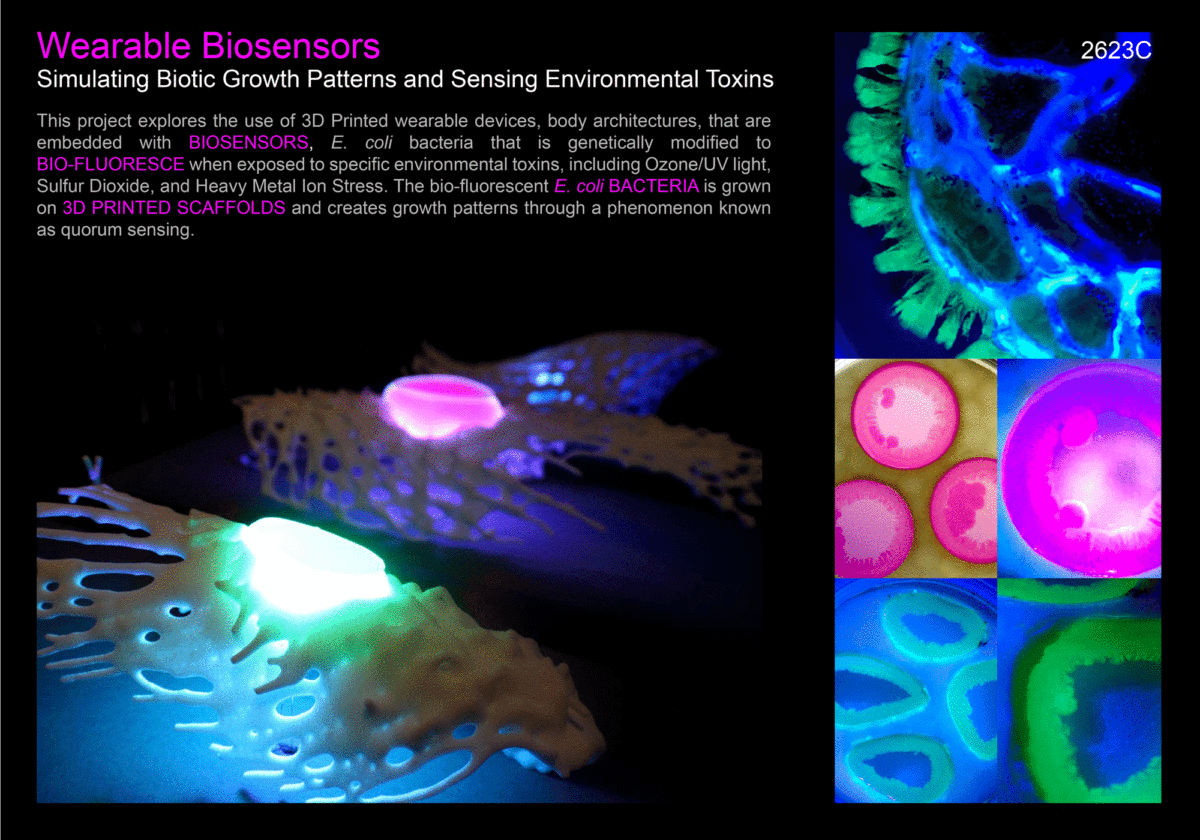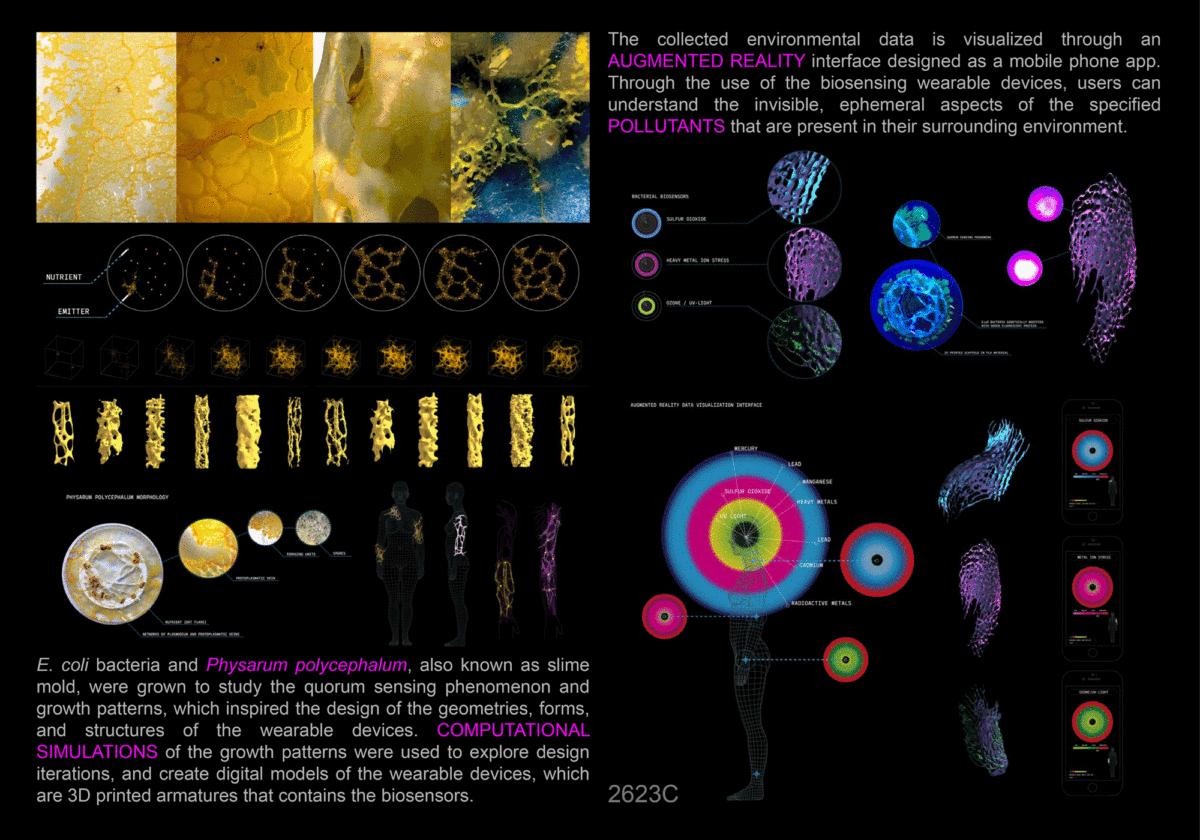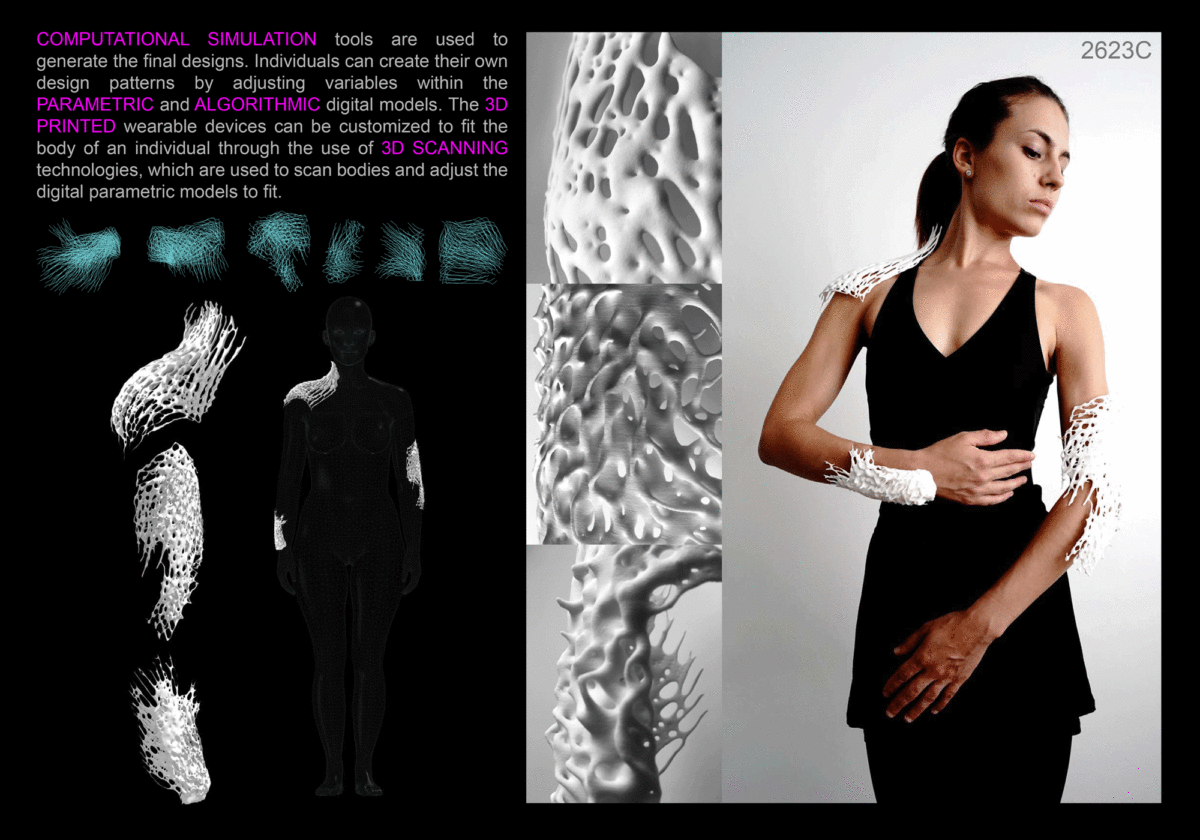RESHAPE18 | sensing materialities
wearable technology category
Wearable Biosensor
Designers: Frank Melendez, Nancy Diniz, Christine Marizzi,

Wearable Biosensors – Simulating Biotic Growth Patterns and Sensing Environmental Toxins
This architectural research project, titled Wearable Biosensors: Simulating Biotic Growth Patterns and Sensing Environmental Toxins, conflates principles in biotechnology with computational processes to design responsive architectural devices that augment bodies with biosensors.
The biosensors, embedded within 3D printed wearable architectures, measure environmental toxins and convey this data through visual effects and quantitative information, bio-fluorescence and an augmented reality interface. The project builds upon ongoing research that is predicated on interdisciplinary collaborations within the fields of architecture and biology.
In this project, a series of growth experiments were conducted to explore the patterns, forms, and morphologies of living organisms. E. coli bacteria and Physarum polycephalum, were grown under specific conditions within various parameters, allowing for a set of criteria in which to assess their unruly, natural growth and behavior.
The project adapts a bio inspired form finding method using E. coli bacteria and Physarum polycephalum, also known as slime mold, single celled organisms that can aggregate together to produce efficient, multi-cellular spatial structures. These behaviors, which include a growth phenomenon known as quorum sensing, were then studied using agent-based computational design simulations to generate the design of the architectural devices.
The devices are custom fit to individual bodies, which are 3D printed, and users can explore various growth patterns by adjusting parameters within the digital models. The 3D printed wearable devices are used as armatures to grow genetically modified E. coli bacteria, which act as biosensors, through fluorescence, when detecting the presence or absence of environmental toxins, such as ozone UV light levels, heavy metals, and sulfur dioxide.
Bacterial biosensors are created by DNA cloning technology followed by bacterial transformation. DNA cloning allows producing a specific protein by expressing specific genes at high levels in E. coli. For example, genes coding for fluorescent proteins like the green fluorescent protein (GFP) can be used as a reporter gene under the control of an inducible promoter, resulting in a bio-florescent effect.

The embedded, living E. coli bacteria, which have very specific nutrient needs, rapid reproduction rate, and very short life cycle, make them an
ideal source of pollution assessment as part of a wearable biosensor.
Using augmented reality, the environmental toxins are visualized as quantitative data through a mobile phone app interface. Through the use of these architectural devices, users can understand the invisible, ephemeral aspects of the specified pollutants that are present in their surrounding environment.
The project evokes a response to designing the relationship between bodies, and the spatial atmospheric conditions that surround them. The research expands upon concepts related to autopoiesis, by exploring the potentials of feedback within architecture, and a shift from static structures, to dynamic, living systems.

Economical Estimation
3D Printed Wearable Devices
Three 3D printed wearable devices, flexible nylon – 200 Euros
Approximately six 3D printed modules for bacteria, transparent resin – 100 Euros
Genetically modified, bio-fluorescent E. coli bacteria – 100 Euros
Agar (growth medium for bacteria) – 40 Euros
Total Costs for Fabrication of Three Wearable Devices: 440 Euros
Augmented Reality
iPhone device required
Augmented Reality interface – 50 Euros
Total Costs for Augmented Reality: 50 Euros
Total Project Cost: 490 Euros

